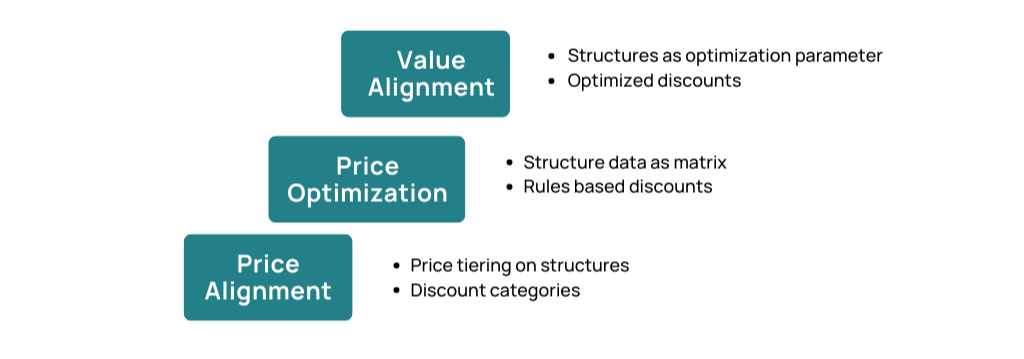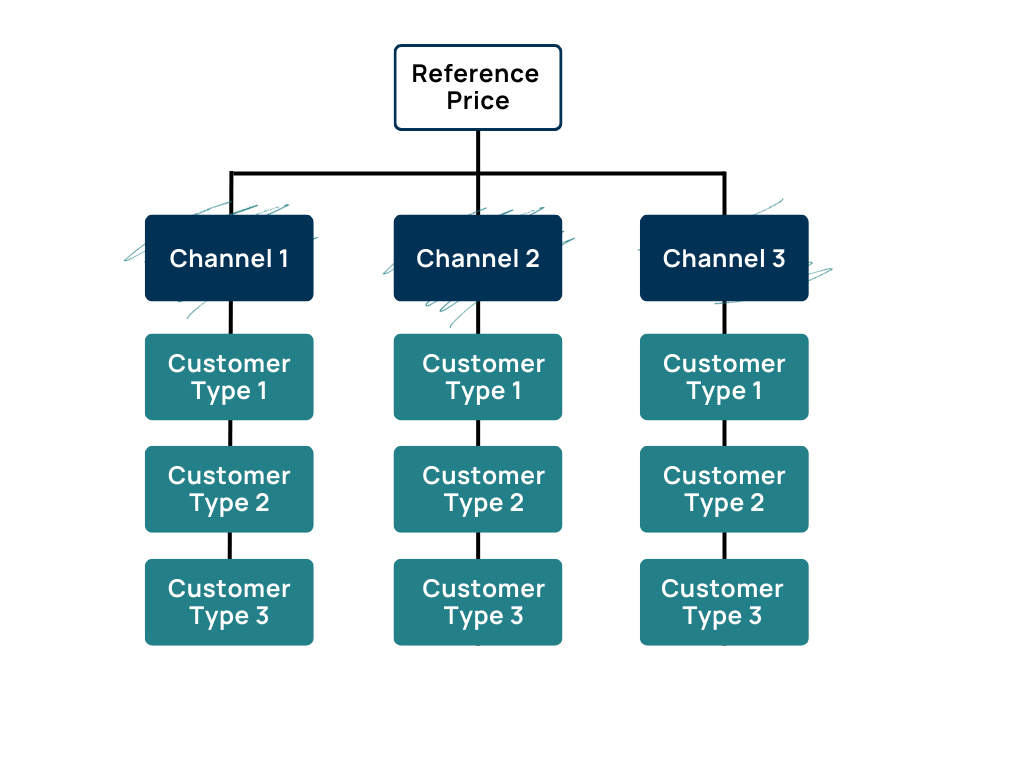
Setting optimal price points for your products and services is key to delivering the best possible profits for your company. However, price optimization can often feel like a daunting task. That’s why it’s a good idea to consider approaching optimization in a few phases.
Maturing your price optimization practices won’t happen overnight. Instead, I often recommend that companies crawl, walk, and run on their way to price optimization.
- Crawl: Price Alignment
- Walk: Value Alignment
- Run: Price Optimization

Taking a phased approach will help you simplify the change needed in your organization by gradually introducing new pricing concepts rather than biting off more than you can chew at the start.
Your Pricing Optimization Journey Starts with Price Alignment
In its most straightforward form, price alignment using channel and market structures is achieved using a pre-defined offset from the reference price level for each channel and customer segment. Channel and customer structure have a fixed link to the price adjustment.
Most B2B organizations are doing at least some level of price alignment. The key operational benefit of the price alignment approach is simplicity. It is easy to understand and visualize the structure used for price alignment, as illustrated below:

There are a few notable drawbacks associated with remaining at the price alignment level of price optimization.
One of the critical issues is the number of alignment factors that get created easily. If the alignment structure has three levels with ten alternatives each, this leads to thousands of factors to maintain. At the same time, there will likely be many factors that will remain essentially unused.
Another drawback is the general nature of the price alignment, where the customer- and channel structure is the only or most minor parameter used for alignment. This limits the accuracy of the method. And that is why we should only consider this as price alignment, as it does not account for value differential between customers.
Moving from Price Alignment to Value Alignment
Moving from pure price alignment to value alignment will create a more precise setup for assigning the correct prices to the right customers. A key element of value alignment is to define the differential of perceived value for the customer and utilize that as a price adjustment metric. Additionally, the value of the deal for the seller should be considered.
Moving to value alignment requires a more elaborate setup than basic price alignment and requires additional elements, including:
- Customer structure parameters (ie. size, type, channel, etc.)
- Value differential elements (ie. customer impact, deal size, next best alternative, etc.)
- Logic and calculation setup (how each parameter is used and the price for the case calculated)
The key difference and improvement between price alignment and value alignment are that within value alignment, conditions of individual deal can be considered. This is a significant maturity step for any B2B business working toward price optimization.
For an in-depth look at price optimization check out Price Optimization: Why It’s Important and How it Works.
Vendavo Deal Price Optimizer offers a way to gain detailed segmentation analysis that leads to the ability to provide sales with precise pricing guidance based on your customers’ willingness to pay.